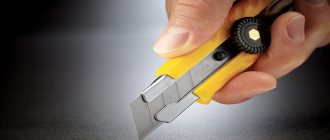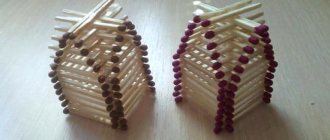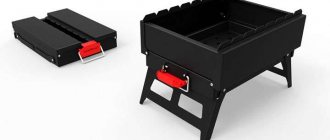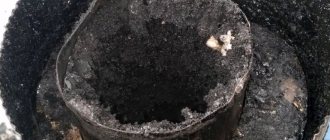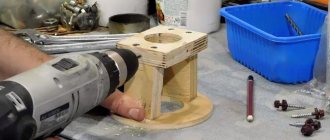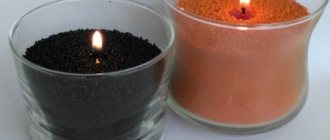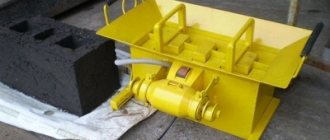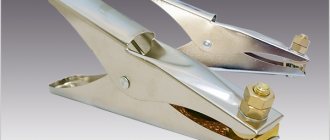When going on a hike in the forest, we pack everything we need with us. If we are planning lunch, then we think about how we will make a fire. The process of packing for a long trip is different from a short one. In a couple of weeks or even a month, a tourist can get caught in rain, snow, or hail.
It is also impossible to exclude the occurrence of emergency situations when the usual matches run out and the lighter is lost. In this case, flint will come to the rescue. The article will discuss: what flint is, what it consists of, and how to make tinder.
What is flint
This is a special invention for striking sparks and starting an open fire. Today, no one can answer for sure how man began to strike sparks from stones or by rubbing wooden sticks, but these steps became fundamental in the process of inventing the modern tourist option. It was in greatest demand in the 18th-19th centuries, when matches were invented.
Today this device is common among tourists, travelers, geologists, speleologists, archaeologists and scientists whose work is related to travel. And this is not surprising. The device has many advantages:
- does not get wet, does not discharge, is always ready for work;
- does not depend on weather conditions;
- suitable for times when fine motor skills are difficult (frost, stress, bulky gloves and mittens);
- easy to care for;
- unlimited storage time, and the rod is enough for more than several hundred fires.
Despite the positive aspects, it is important to consider the nuances:
- when the components rub, only sparks are formed, but not fire;
- the need for training and having at least minimal experience in how to make a fire using a flint.
The meaning of flint: how is the word interpreted in different dictionaries?
According to Ushakov’s explanatory dictionary of the Russian language, flint is a piece of stone or steel intended for cutting fire from flint. Other dictionaries indicate identical meanings. Encyclopedic Dictionary, 1998 Flint - “an iron or steel plate for producing fire by striking flint. Used from the beginning of the Iron Age to the 20th century.” Great Soviet Encyclopedia.
Flint is a steel or steel product (mostly roll-shaped or rectangular-oval in shape) used for making fire by striking flint. It was common from the advent of iron until the invention of matches in the 19th century. In a number of regions of Europe, it remained in peasant life until the beginning of the 20th century. O. was worn at the belt in a leather bag along with flint and tinder. If earlier you asked yourself the question, what is flint and did not know the answer, now you probably understand what we are talking about.
Types of flint
In the 18th century, it consisted of an iron rod and flint (a solid mixture of rare earth minerals). Sparks arose at the moment of their friction. Over time, technology improved and various metal alloys were invented that ignited much more easily.
If we consider modern models, there are 2 main types:
- Manual - in order to light a fire you will need to use both hands.
- Semi-automatic is an option mainly for beginners. The design is made in such a way that only one hand is needed to create sparks.
- Tactical - they are included in the equipment of soldiers.
Lighters can be classified as the simplest types of semi-automatic flint.
What flints are available for sale?
Modern flints offered by manufacturers for the tourism market are divided into manual, mechanical and semi-automatic. You have to work with both hands with the first ones, but with one hand you can handle the second ones.
All devices produced today use:
- a ferrocerium rod acts as a rod;
- in the role of flint - a metal plate;
- in the role of tinder - magnesium.
The devices are equipped with a comfortable handle and a waterproof case; they can have a titanium case, inside of which a sparking rod works. The price fluctuates greatly, depending on the modification and marketing of the producing company. The range is from a few dollars to tens of dollars.
What does flint consist of?
There are only three elements that make up flint. But every part is irreplaceable:
- chirkalo - often it is flint, pyrite or a simple metal plate;
- armchair - a rod from which sparks are struck;
- tinder is a highly flammable material that should be exposed to sparks from the chair. Without it, it is impossible to make a fire.
Kresalo
This is a small metal pyrophoric element. Spontaneous combustion occurs upon impact with flint. At this moment, the small chips that form are heated. Interaction with oxygen promotes inflammation.
Kresalo.
Initially, iron was used for the chair. However, inertia and rigidity complicated the task. In the 20th century, an alloy of cerium, lanthanum and iron was invented. It is called ferrocerium.
"Flint"
This is a small piece of material that is harder than a chair. When struck, the flint scratches it and small chips are formed. The presence of sharp teeth greatly simplifies the process of striking sparks.
Initially, it was made from the breed of the same name and carefully monitored the quality. There should be no cracks on it to avoid getting wet.
Over time, when alloys for making chairs were invented, the requirements for flint decreased. Today, hardened high-carbon steel is used.
Tinder
This is a highly flammable material. When sparks formed at the moment of impact between silicon and carbon, as well as when oxygen interacts, it begins to smolder or immediately ignite, depending on the quality.
How to make flint with your own hands
Anyone can build a completely working flint with their own hands; you just need to find the right material for each component.
As flint, it is advisable to use a piece of silicon, pyrite, silicon dioxide - crystalline or amorphous stone.
Layered rocks are not suitable - they swell in water and disintegrate into layers under intense friction. Also, you should not use a cracked mineral as a base for flint - it will crumble during work. The size of the flint should be such that it can be confidently held in the hand - optimally 5x3 cm.
A strip or rod made of alloy steel or a pyrophoric alloy, having an uneven surface with small notches, is suitable as a chair In practice, a piece of a file or a piece of a hacksaw works excellently - the sparking flow from them is the most abundant. But the ideal option is a mischmetal alloy.
The principle of producing sparks is based on the impact of metal on stone. The knocked-out metal shavings begin to heat up from interaction with oxygen and give a spark with a temperature of about 1000ºC.
Note! If you decide to use a knife blade as a cutting edge, then you should not use the cutting edge for this - it quickly burns out, besides, it becomes dull and makes further use of the knife for its intended purpose difficult. It is better to use the dull edge of the blade near the handle.
Any dried material capable of rapid combustion or active smoldering is taken as tinder
- cotton rag, preferably pre-singed;
- a ball of cotton wool;
- moss;
- bark of tree;
- linen;
- tinder fungus.
Note! To protect the tinder from water, it can be pre-soaked in molten paraffin or wax, and to enhance its flammable properties, it can be pre-soaked in gasoline, kerosene or alcohol.
Operating principle of flint
As has already become clear, the flint itself does not produce an open fire, as is possible when using matches or a lighter. When the striker and the steel rub, a bunch of sparks are formed that ignite the tinder.
How to properly light a fire with a flint
The algorithm for using flint is as follows:
- Make sure all elements are dry. If moisture gets on the instruments, they must be wiped and dried. Special attention is paid to tinder - if possible, it is replaced.
- Prepare the kindling.
- If the rod is magnesium, then you need to scrape off some shavings from the soft side and combine them with tinder. Next, turn it with the hard side and hit it down with the hammer so that the sparks hit the tinder. Experienced tourists recommend first making a couple of short movements at the bottom, and then one more dramatic one.
- When a smoldering coal appears, the tinder is combined with kindling. When the fire dies down, you can add more twigs and start building a fire.
When to use flint
When going on a hike, everyone probably stocks up on matches and lighters. They make it very easy to start a fire. Flint is an indispensable thing on a hike. When the first two options fail or get wet by rain, an old invention comes into play. It is enough to dry the flint for igniting the fire and the wood, find and prepare the ignition for the fire.
Magnesium flint has proven itself to be the most advantageous - it is practically insensitive to temperature conditions and humidity.
Note! Another name for magnesium flint is magnesium flint . The combustion temperature reaches 2200 degrees, that is, ignited shavings can set fire to almost any material. Even if there is a strong wind outside, the shavings flare up instantly and do not go out, occupying the tinder.
It can also be used as a signal quality if you are with a company in the forest. The flashlight may fail, and the resulting sparks can be seen from afar. However, in this case you need to be extremely careful so as not to set fire to the dry wood in the forest.
How to make a fire using flint?
In order for the flint to always be in working condition, it must be stored in an airtight container. This relates primarily to cresal and tinder. The chirkalo can simply be wiped clean of moisture before use.
To work with a classic instrument you need to use both hands:
- before use, you must make sure that all components are dry (the tinder should be very dry); if this is not the case, first wipe and dry them or replace them if possible;
- then you need to prepare kindling, with which the flame will be fanned; Any dry material (grass, thin twigs, splinters, etc.) is suitable as kindling;
- if a magnesium rod is used, scrape off the shavings and combine them with tinder and kindling (the shavings easily ignite from the sparks that fall on it), otherwise, the tinder is placed on the striker so that the sparks struck immediately fall on the tinder;
- if the tinder is lying on the striker, it is taken in the left hand, and the striker in the right; when placing the material on the kindling, on the contrary, they hit the striker with the striker so that the sparks fly down onto the tinder;
- further, you need to vigorously rub the striker on the arm (or vice versa) and keep an eye on the tinder; you should not make sweeping movements - rather quick and short strokes;
- as soon as a smoldering coal appears, you must carefully place the tinder in the kindling, if it is not already there, and slowly fan the flame;
- When the fire flares up, we begin to add small twigs to make it stronger and then transfer everything to the fire.
Making flint
It’s better to make flint with your own hands at home. You will be able to study the features and nuances. When traveling or in emergency situations, it can be difficult to obtain the necessary elements.
And it is almost impossible to create an analogue of a modern tourist version of factory production in field conditions.
Main parts of flint
A homemade flint consists of two main elements: a flint and a steel, the interaction of which produces high-temperature sparks. The campfire set for starting a fire consists of:
- The armrest is a steel plate. For its manufacture, hardened high-carbon steel is used, which ensures high strength of the material.
- Chirkalo is a natural mineral stone endowed with pyrophoric properties, i.e. it is easily flammable. When friction with the steel, small chips are formed, which ignite when interacting with oxygen.
- Tinder is an auxiliary part. This is ignition material.
What to make flint from at home
There are several options for making flint at home:
- The screwdriver is sawed in half. Using a drill, a hole is made on one side and silicon is placed. One edge should be sharp, and the smooth end will create sparks. Everything is attached with glue. The surface is treated with sandpaper. For convenience, you can make a handle.
- If you have an unnecessary lighter, you can take the silicon wheel from it. It is fixed to a wooden clothespin using a self-tapping screw. An alternative is to use a split pencil. A flint from the same lighter is inserted inside, and then a wheel.
- Magnesium flint is made from a piece of magnesium. The soft side is needed for cutting chips. On the other hand, there is a flint or ferrocerium rod for cutting sparks, which ignites the chips.
How to make tinder for flint
The ignited tinder will allow you to start a fire. Suitable for production:
- burnt dry rags;
- dry grass or moss;
- pine needles;
- birch bark;
- flax fiber;
- sawdust or shavings;
- fluffed cotton wool or cotton;
- wax paper.
Tinder is often prepared at home, before going on a hike. Take a look in your clothes dryer and you'll likely find lint buildup from cotton fabrics. If not, then cut several pieces of fabric and put them in a metal can, cover the top with foil and make several small holes.
If you find yourself in nature, then tinder can be prepared from scrap materials.
The workpiece is placed on the fire for 10–15 minutes. When the smoke stops coming out, you can remove it. The result is highly flammable cotton charcoal.
Cotton wool is the same as cotton. Balls are rolled out of it and lubricated with Vaseline. Store them in an airtight container.
The simplest option involves using thinly sliced paper.
If you find yourself in nature, then tinder is prepared from scrap materials. Suitable for this:
- Birch or oak bark, or rather, a thin layer in the form of strips is removed from the inside. If you find birch bark, then it is permissible to use the upper layers.
- Cattail fluff.
- The core of a tinder fungus.
- Finely sliced bamboo fiber.
Useful tips
Any steel is suitable for producing sparks from the described device. The main thing is that it is doped. Even if it does not have high corrosion resistance, the only important thing is whether it produces enough sparks. Remember that using a knife blade as a cutting tool is not advisable. It fades and may become dull. This method should only be used in extreme cases. A standard flint steel can successfully replace a small piece of hacksaw blade. You can do without flint, but it will definitely come in handy when traveling. If you are an avid hiker, get one. Moreover, even the cheapest model will cope with the task if everything is done correctly. Now you have received the answer to the question of what it is - flint.
Portal to the Nether
One of the most useful functions of the lighter is the launch of the ability to get into the Lower World. A map that has been covered far and wide often becomes boring after just a few days. And I want something really new. Therefore, the developers added to the game the creation of portals to other worlds. The Nether is one of the first places you can get to in Minecraft.
To do this you need several materials:
- Obsidian blocks
- Lighter.
You need to create a frame using obsidian. And the lighter serves as an activator for the portal. But under no circumstances should you throw it away or leave it in one of the worlds. Down in the Nether there is pitch darkness. A lighter will be needed to illuminate the intended path. It is important to remember: after 64 available uses it will disappear and you will need to make a new one. Therefore, you will have to make a small supply of this item in your inventory.
Pros and cons of flint
A device for starting a fire, common among people whose life involves traveling and traveling, has a lot of advantages. It is necessary to understand the issue of flint - what it is, what its disadvantages are before purchasing. The most important point is that flint does not create fire. As a result of friction, sparks are struck. Another disadvantage is the need for experience; it can be difficult to strike a fire the first time. But the flint keychain has many advantages:
- constant readiness to work;
- lack of dependence on weather;
- possibility of use in difficult conditions;
- unpretentiousness;
- unlimited storage time.
